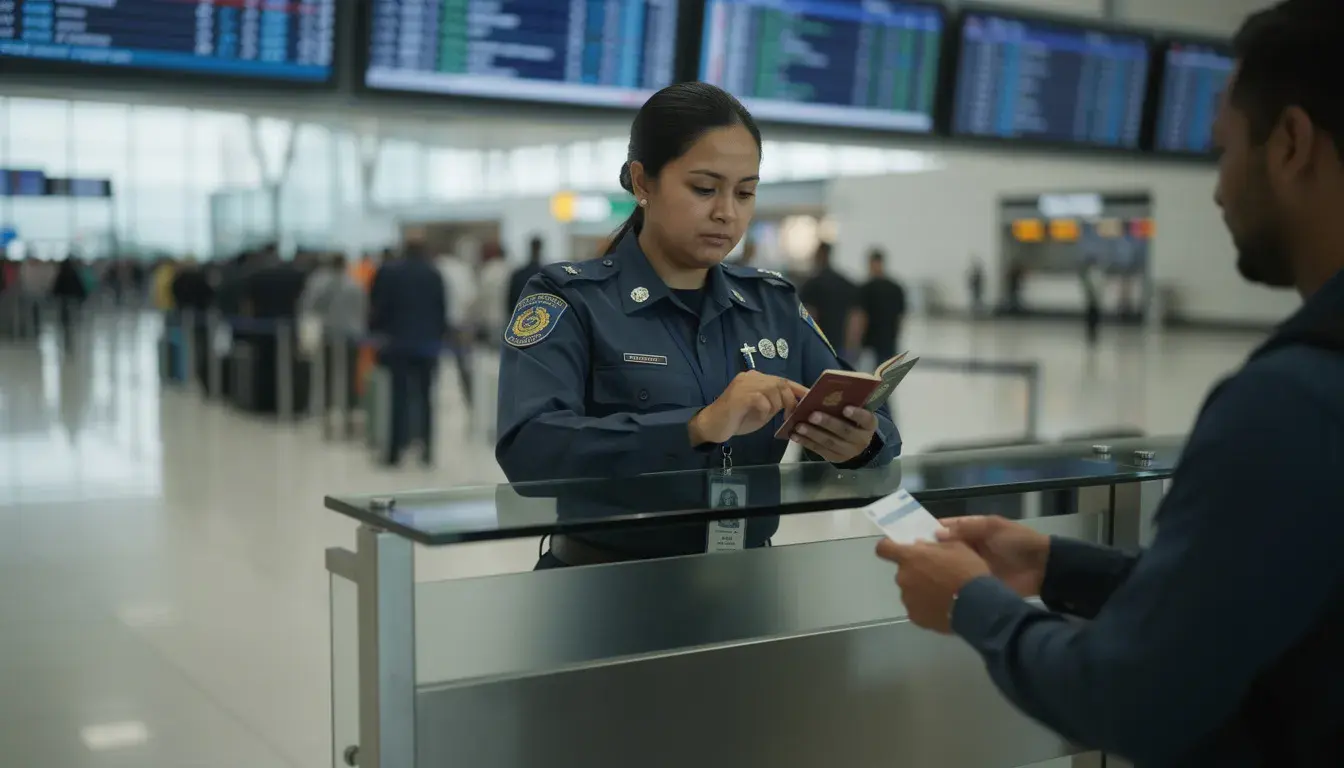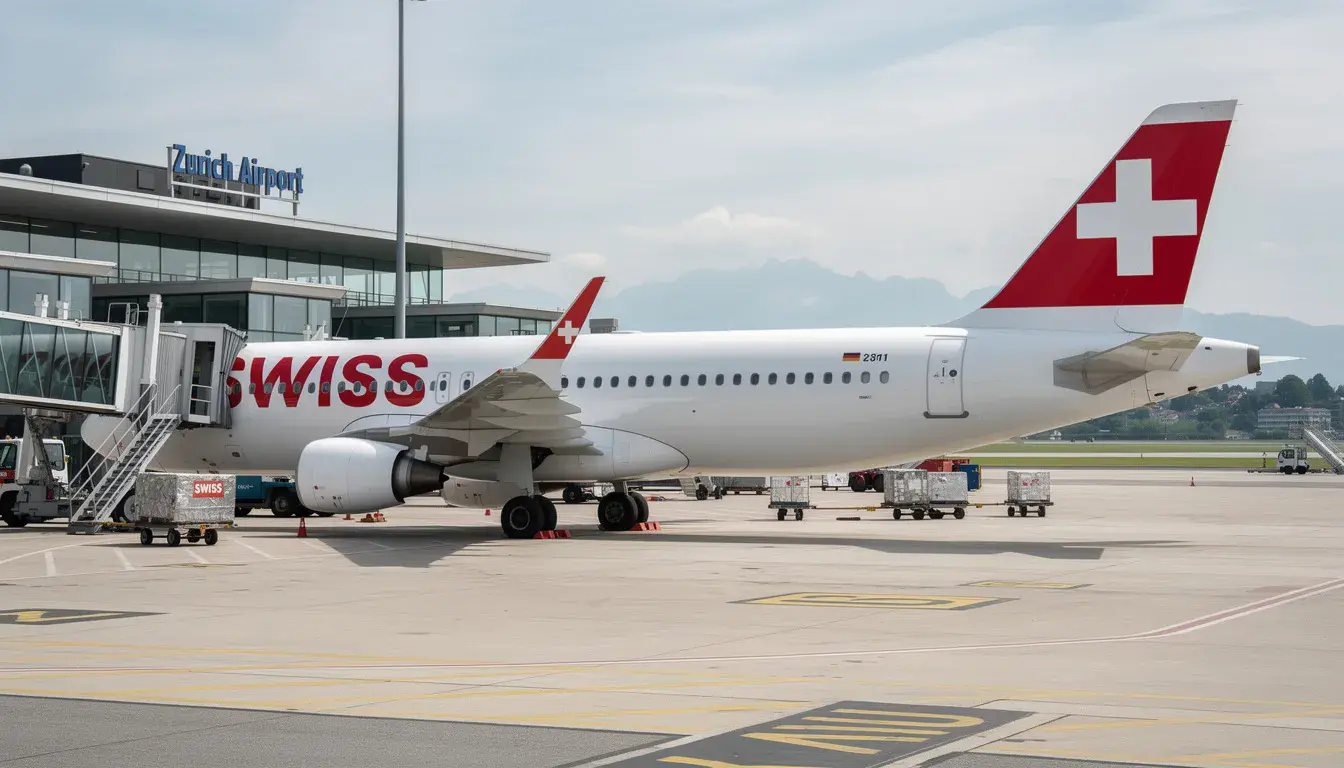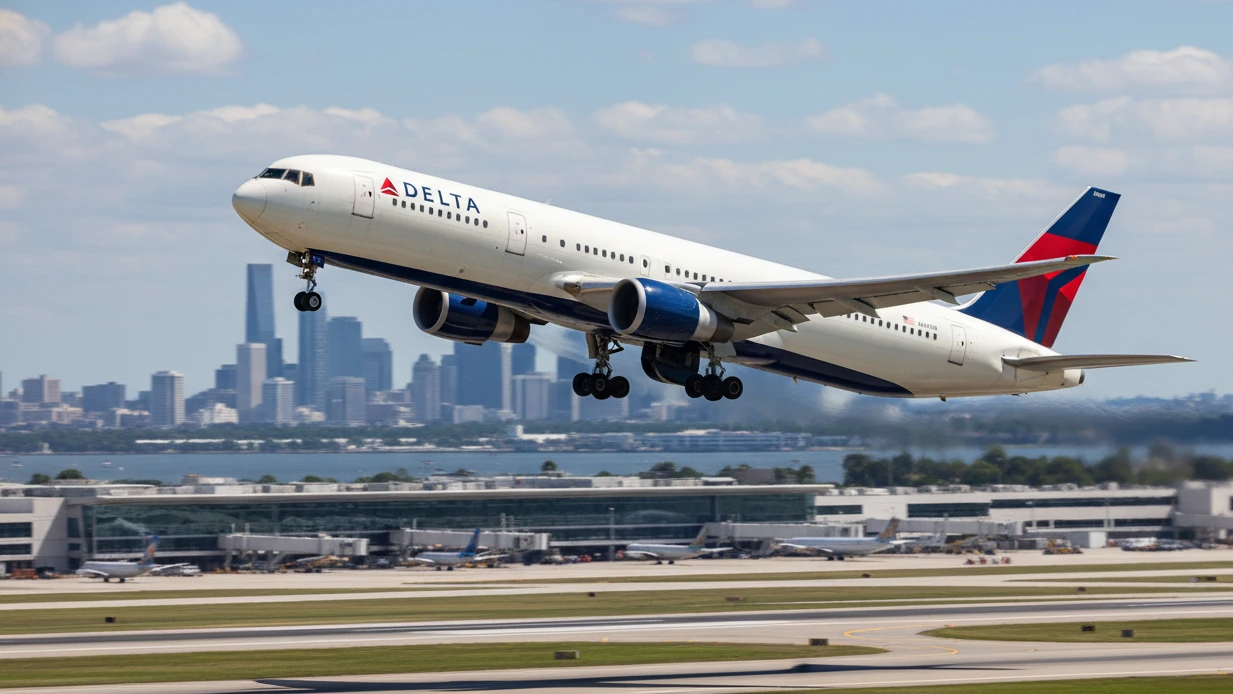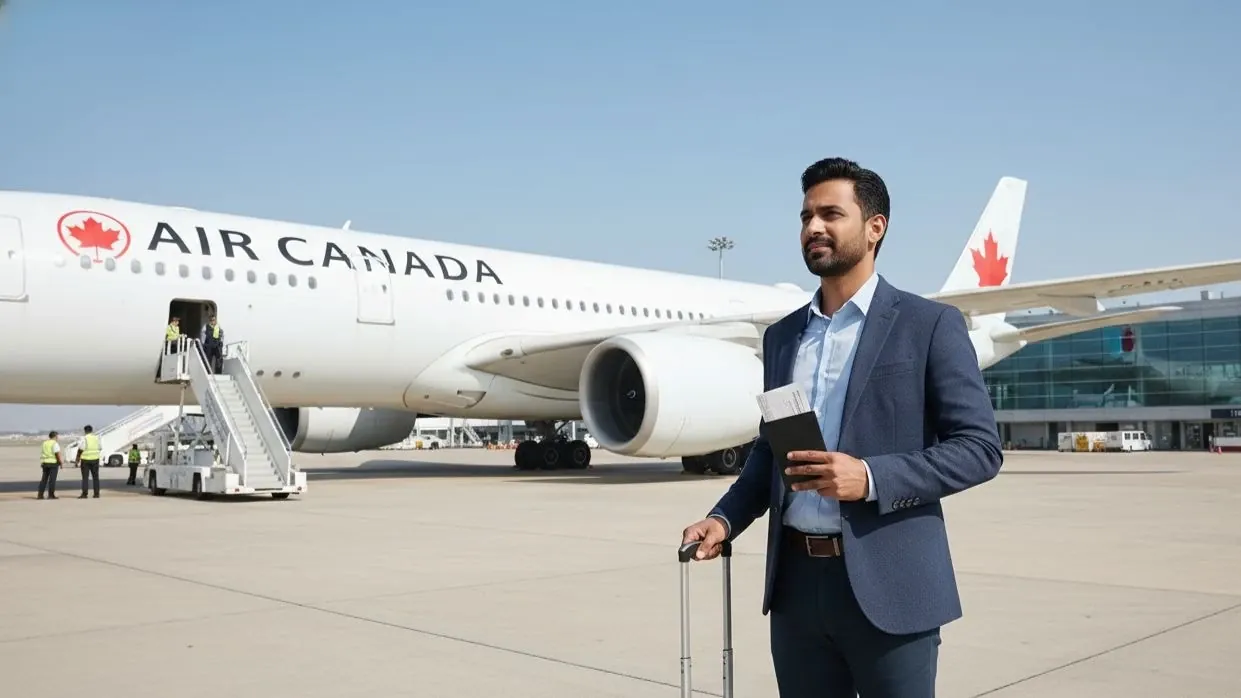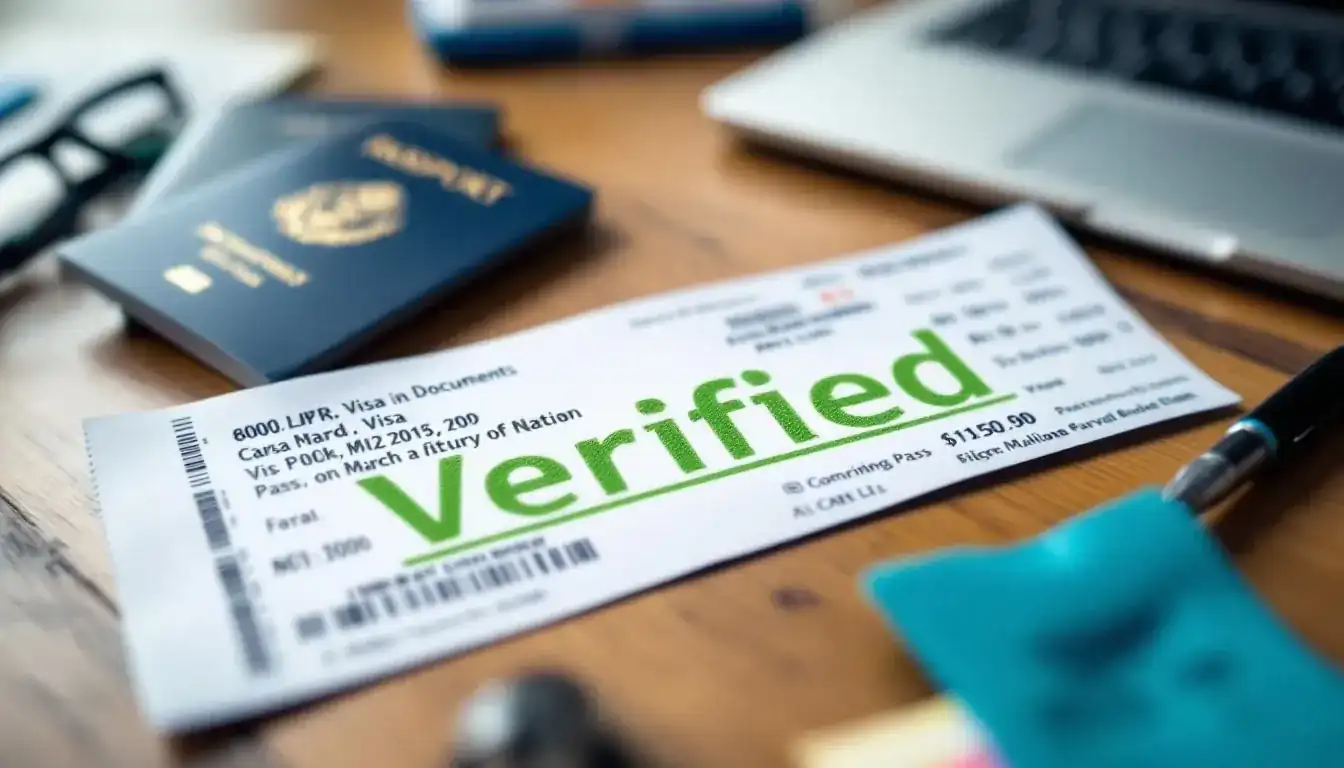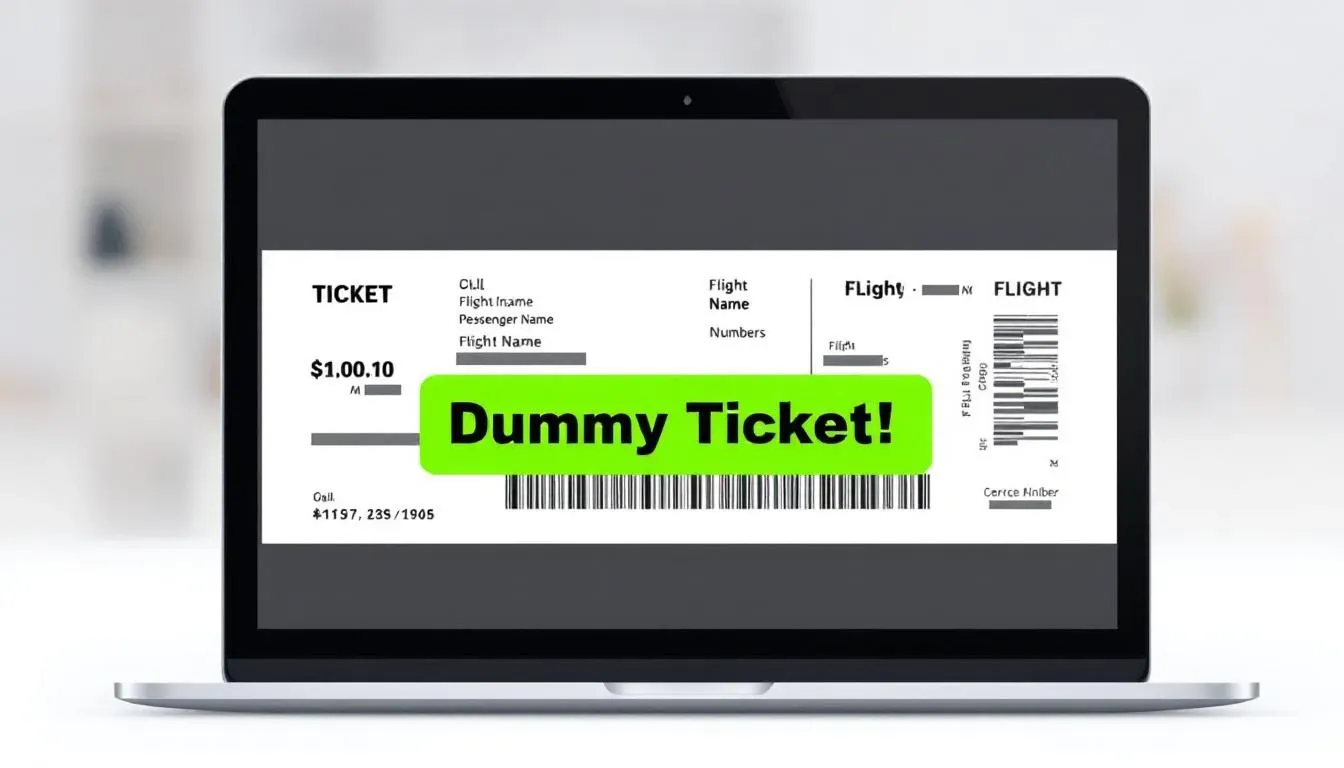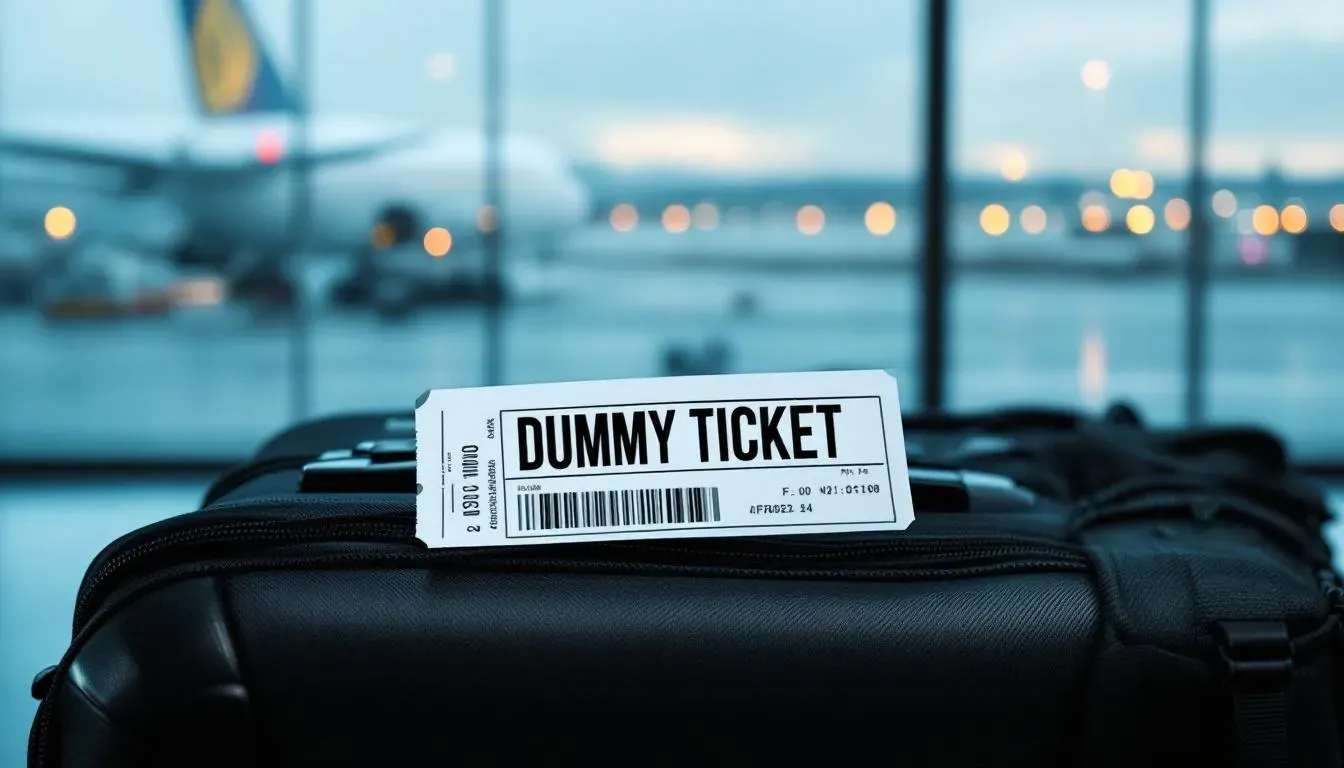Do UK Student Visas Require Flight Reservations? What Indian Applicants Must Know in 2025
Starting a UK course is exciting, but the visa admin can feel like a maze. You might be wondering if UKVI expects you to lock in flights right now. In most cases, you don’t need a paid ticket for the application. What you do need is a credible plan that matches your CAS, TB test, biometrics, and expected decision date. That’s where a smart, verifiable dummy ticket can help. It shows intent without trapping you in penalties. For more details on the overall visa process, check our FAQ or explore insights in our blogs.
We’ll walk you through exactly when a reservation strengthens your file and when it adds no value. You’ll see how to verify a PNR, align dates with orientation, avoid name and date mismatches common for Indian applicants, and plan an onward or return leg for short courses. The goal is simple. Keep costs low, risk lower, and your case consistent. Secure a verifiable reservation in minutes—try our dummy ticket booking now. If you're new to this, our About Us page explains how we support students like you every step of the way.
A flight reservation for a UK student visa is not an official requirement, but it is highly recommended when submitting your visa application. The UK Visas and Immigration (UKVI) office often asks for proof of travel plans to confirm your intended date of arrival. Instead of purchasing a full ticket, students can submit a verifiable flight reservation with a real Passenger Name Record (PNR) as acceptable documentation. BookForVisa.com provides embassy-approved flight reservations for UK student visas — valid, verifiable, and fully compliant with UKVI submission standards.
Last updated: October 2025 — verified against UKVI and TLScontact student visa documentation policies.
Table of Contents
What UKVI Actually Checks, And When A Hold Booking Helps
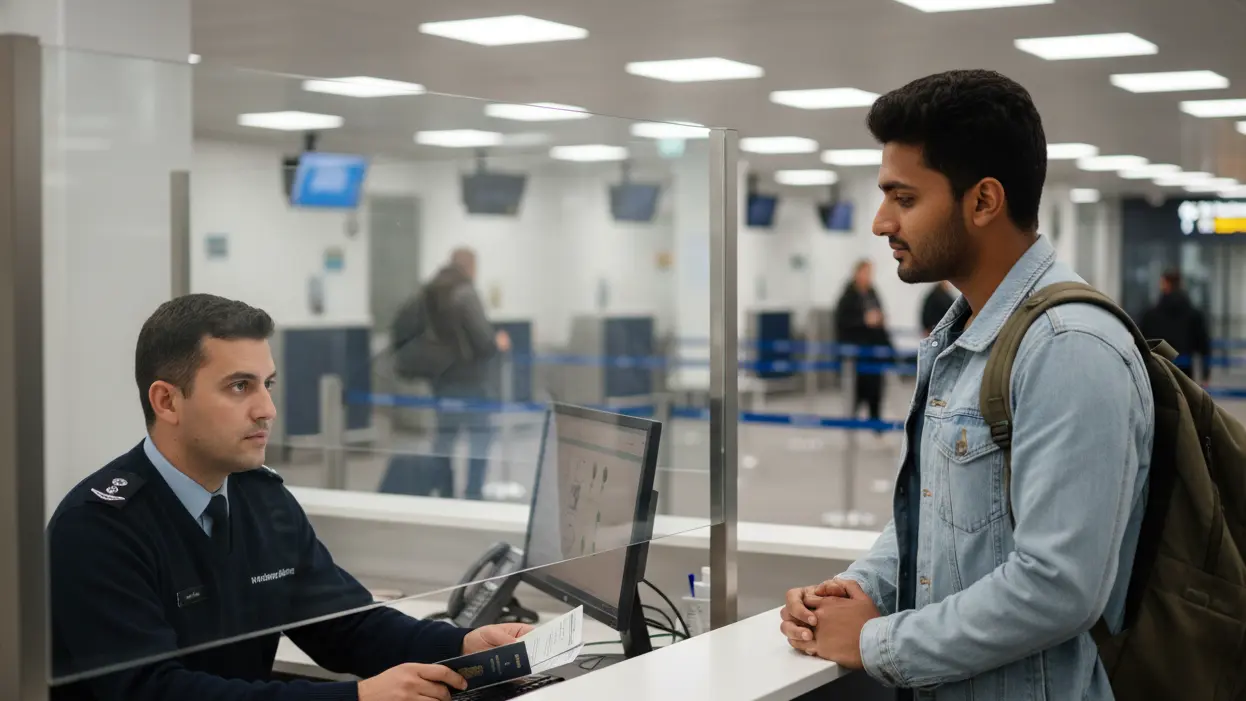
Before you hunt for fares, remember the goal. Your visa officer wants a coherent, credible plan that matches your documents. A paid ticket is not the star of that show. Strong eligibility is. Need flexible dates for your visa file? Book a dummy ticket now and adjust the dates anytime. For deeper insights into eligibility criteria, refer to the IATA guidelines on travel documentation.
Caseworkers Care About Eligibility, Not Your Boarding Pass
UKVI reviews your CAS details, finances, credibility, and TB test first. They check the maintenance of funds, the source of funds, and whether your course and university are genuine. They look at your study history and your intent. A confirmed ticket does not fix weak evidence. It can even distract from what matters.
Think of travel proof as optional. If it supports your story, include it. If it adds cost or confusion, skip it at filing and keep your focus on the core. Expanding on this, many applicants overlook how financial proof ties directly into travel intent. For instance, demonstrating sufficient funds for tuition and living expenses often carries more weight than a flight booking. According to UKVI statistics, over 80% of refusals stem from financial inconsistencies rather than travel plans. To bolster your case, ensure bank statements cover at least 28 days prior to application, with clear transaction histories that align with your sponsorship if applicable.
Moments When A Live PNR Adds Weight
There are situations where a verifiable hold booking helps. Not by impressing the officer with a purchase, but by proving your timing makes sense.
-
You are close to orientation and need to show that you can arrive on time.
-
Your CAS arrived late, and your intake window is tight.
-
You used priority or super priority service and expect a fast decision.
-
Your TB test was retaken, and you want to show a realistic travel window after result release.
-
You are on a short course or exchange and want to show onward or return intent.
In these cases, a live PNR that can be checked on an airline or OTA portal signals that your dates are real, not random. You are not locked in. You are simply demonstrating a plan. To further illustrate, consider peak seasons like September intakes, where over 100,000 Indian students apply annually. A timely PNR can differentiate your application by showing proactive planning amid high volumes.
Map Your Timeline From CAS To Student Visa Permission
Indian applicants often juggle many dates. The cleanest files follow a simple order. You book TB test appointments early with an approved clinic. You receive your CAS and confirm your course start and orientation dates. You pay the visa fee and IHS. You submit your application and attend biometrics at VFS.
Now look at likely decision timing. Standard processing can vary. Priority and super priority are faster. Build a travel window that respects your orientation and accommodation start. For September intakes, expect busy travel weeks from mid-August to early September. For January intakes, watch New Year congestion and fog delays out of North India. For May starts, factor in exam calendars and family events.
A hold booking near your expected decision window keeps you flexible. You can move it if your CAS changes or if the university updates induction. You stay aligned without burning money. Additionally, tracking UKVI's monthly processing reports can help refine your estimates—recent data shows average waits of 3-5 weeks for standard services from India.
Why Buying A Full Ticket For UK Visas Too Early Backfires
Many students feel pressure to buy early to “show seriousness.” That move often hurts. Deferrals happen. CAS corrections happen. Hostels change allocation dates. Airlines apply change fees and fare differences. Refundable fares are not always fully refundable. Third-party processing can take weeks. Currency conversion adds another layer of loss if you cancel.
If your decision slips by even a few days, the cheapest solution is usually a new plan, not an expensive change. A premature purchase also creates mismatch risks. Your application might mention one arrival window while your e-ticket shows another. That inconsistency invites questions you could avoid.
A verifiable reservation holds intent without locking your wallet. It lets you keep your narrative tidy while you wait for the official yes. To mitigate this, always review airline policies beforehand—many low-cost carriers impose fees up to 50% of the fare for changes.
Keep Every Date Singing From The Same Sheet
Consistency is your friend. Line up four anchors, and you will avoid most headaches.
-
Course And Orientation. Use the university’s joining instructions. Many schools require in-person ID checks and late arrival permission if you miss induction. Time your arrival so you can open a bank account, pick up BRP guidance, and settle housing.
-
Accommodation. Your housing contract start date should match your arrival plan. If you shift the arrival, adjust the reservation that references it.
-
Application Forms And Receipts. Your fee and IHS payments create timestamps. Your narrative in the form should match your proposed travel window.
-
TB Test. If your TB certificate issuance date is very close to your proposed travel, plan an extra buffer in case of rechecks.
Names matter as much as dates. Indian naming patterns can introduce spelling and order variations. Make sure the passport, CAS, and reservation carry the same sequence. Avoid initials if the passport has full names. Watch for hyphens and spaces. One small mismatch can block airline check-in and confuse a caseworker reading your file.
Routes matter too. Many flights from India connect through the Middle East or Europe. Check if any leg needs a transit visa based on your nationality and destination. If your travel history shows prior refusals in a specific region, choose a neutral routing. Keep your route plausible for the season and price level.
If you are taking a short course, think about the return story. You do not need to prepay both legs. You can show a hold for an onward or return segment near the course end. That proves your plan to exit on time without sinking costs.
Finally, give yourself buffers. Airports like Delhi and Mumbai handle heavy student traffic before major intakes. Security queues grow. The weather can disrupt schedules in winter. Add a day on arrival so missed connections do not make you late for registration. Leave room between the visa decision expectation and the proposed travel. A two-to-three window approach works well. If the decision lands in window one, you travel as planned. If it lands in window two, you shift the hold. Your file still looks tidy.
When you respect sequencing, avoid premature purchases, and use a hold only when it adds clarity, you protect both credibility and cash. That is the balance a UKVI officer appreciates. To expand, consider how seasonal factors like Diwali or monsoon delays in India can extend buffers—aim for at least 48 hours between landing and orientation to account for such variables.
Turn A Hold Into Proof, Not Pressure
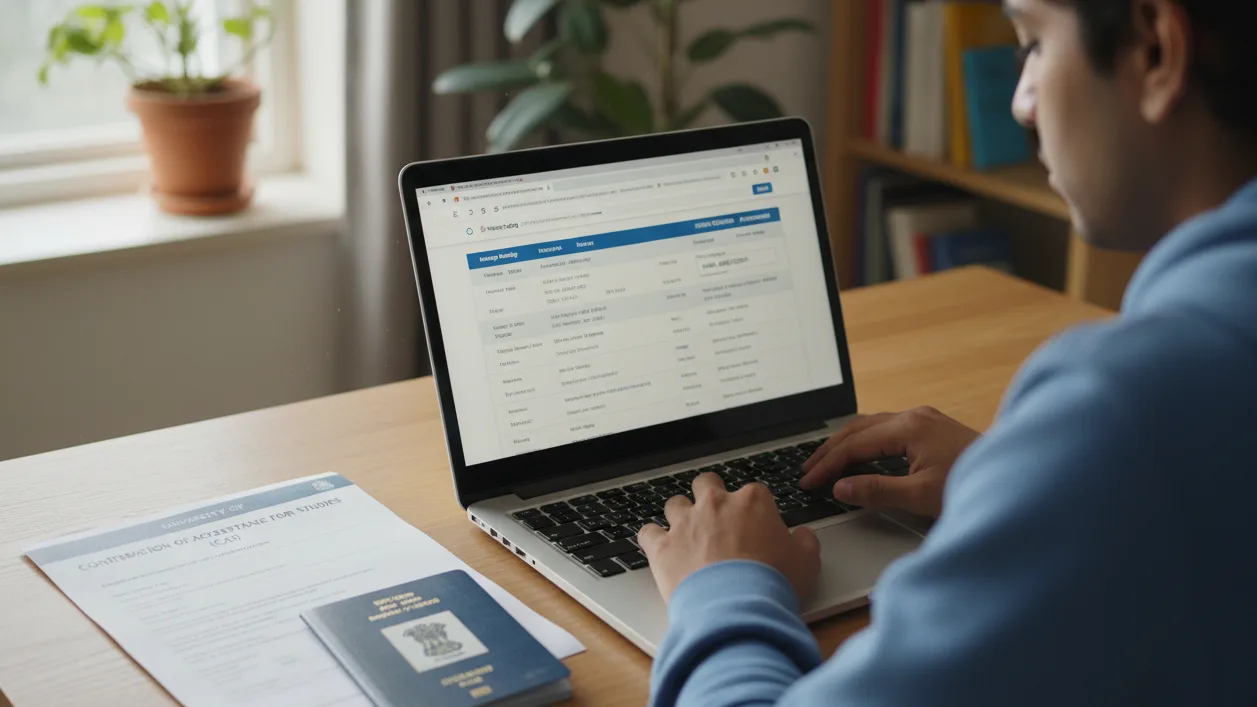
You want your file to look thought through, not overpaid or overcomplicated. A verifiable reservation helps when it proves timing and intent. It should never lock you in or create mismatches. Use it like a tool, not a trophy. Keep your application tidy and low risk with a quick dummy ticket booking. 👉 Order your dummy ticket today to align your travel plans seamlessly.
Check The PNR Like A Pro, In Two Minutes
A live PNR is only useful if it can be looked up. Do this before you attach or mention anything.
-
Go to the airline or OTA “Manage Booking” page.
-
Enter your surname and the six-character PNR.
-
Confirm that you can see your itinerary, passenger name, and sectors.
If the portal shows an error, it may be a timing issue or a typo. Try again. Then try the operating carrier if your flight is codeshared. Save a PDF or screenshot that shows the booking details and today’s date in your device tray. Do not edit or crop crucial fields. Keep the file name clean and short.
What counts as “live” for your purpose is simple. The itinerary loads. Names are correct. Sectors are correct. Dates align with your plan. That is enough to demonstrate intent without paying in full. Pro tip: Always test the PNR on multiple devices to ensure accessibility, as UKVI caseworkers may use various portals for verification.
Match Your Travel Window To Campus Reality
Your reservation should track real university instructions. Not wishful thinking.
-
Read your joining email carefully. Look for reporting deadlines, orientation dates, and late arrival rules.
-
Note when accommodation keys are released and when induction checks happen.
-
Work backward to build a travel window that gets you to campus early enough to settle essentials.
For Indian students, peak travel weeks can be tight. August and early September fill quickly for the autumn intake. January has fog-related delays in North India. May sits near exam season and weddings. Your hold booking should allow buffers. Aim to arrive at least a few days before orientation. You will need time to collect your student card, set up a bank account, and buy a SIM.
If your university allows late arrival with permission, keep proof of that email. Align your reservation to the approved window. If the school updates induction dates, shift the hold. Do not leave a stale PNR floating around that contradicts your latest form. Universities like UCL or LSE often send mid-summer updates, so subscribe to their student portals for real-time alerts.
Skip The Big Three Trip-Ups
Most file inconsistencies fall into three repeat offenders. Fix these early.
Name Variations
Match your passport, CAS, and reservation perfectly. Many Indian names include middle names, initials, or compound surnames. Follow the passport order and spelling on the reservation. Avoid initials if the passport spells the name in full. Watch for spaces and hyphens. Even a tiny change can block airline check-in and confuse caseworkers.
Date Drift
Check the four points together. Course start. Orientation. Housing start. Proposed arrival. If one moves, the other three may need to move. Out-of-sync dates look careless. They also cause practical issues like arriving before your room is ready.
Routing That Raises Questions
Choose routes that fit your profile. If you plan a Schengen or US stop, check any transit visa implications. If your history shows prior issues in a specific region, pick a neutral hub. Keep connections realistic for the season. Winter in Europe can add disruption. Tight 45-minute turns look risky.
Short Courses: Show The Exit Without Paying For It
Short courses and exchanges often benefit from a clear return story. You do not need to prepay both legs.
-
Hold a plausible return or onward segment near your course end.
-
Make sure the date aligns with the academic calendar and accommodation checkout.
-
Keep room to adjust if the assessment timetable shifts.
This approach shows intent to depart on time while protecting your budget. If the school publishes a result or final submission window, use that to frame your return. For modular programs or project-heavy terms, factor a few days for lab clearance or equipment returns.
If you plan to travel within Europe after the course, keep it believable. A same-day lecture finish followed by a morning connection across two hubs looks forced. Push the itinerary a couple of days so your plan reads like a real plan. For short courses under 6 months, UKVI particularly scrutinizes return intent to prevent overstays, so a well-timed hold can preempt concerns.
Change Happens: Keep One Source Of Truth
When dates start moving, chaos begins with version control. Prevent it.
-
Maintain a single document that lists key dates and their sources. CAS. Orientation. Housing. TB certificate. Biometrics. Decision estimate.
-
Each time a date changes, update the list first. Then update your reservation if needed. Then update any reference in your application narrative or supporting note.
-
Rename PDFs with a simple pattern. Use yyyymmdd at the start, then a short label. For example, 20250818-Orientation.pdf.
If you are using priority or super priority, plan three overlapping travel windows. Early, expected, and fallback. Put holds in the expected window. Keep a note of alternative flights in the fallback. If your decision lands quickly, great. If not, you shift the hold into the next window without panic.
Before you submit, do a five-minute hygiene check.
-
PNR loads on an airline or OTA site.
-
Names match the passport and CAS in the same order.
-
Dates align with orientation and housing.
-
Transit rules look fine for your routing.
-
Your TB certificate and biometrics dates do not collide with your travel.
If any item fails, fix it now. A tidy, verifiable reservation acts like a spotlight on your planning skills. It says you are ready to arrive, but smart enough not to burn cash before the decision. That is exactly the message you want to send. Tools like Google Sheets for date tracking can simplify this, ensuring all stakeholders (family, agents) stay synced.
What Travelers Are Saying
Choosing The Smarter Path: Hold, Refundable Fare, Or Wait It Out
You want a plan that keeps your file credible and your wallet safe. Here is how Indian students can compare the main travel options while keeping every date consistent with the rest of the student visa application. Running on a tight intake timeline? Book a dummy ticket now to show intent without prepaying fares. This choice is especially relevant for the 2025 intake, where UKVI has tightened scrutiny on travel coherence amid rising applications.
Option A: Use A Verifiable Hold To Signal Intent, Not Spend
A live reservation is a flexible placeholder. It shows that your travel to the UK aligns with your course start date and orientation. You do not prepay the fare. You simply attach a plan that can move if the timeline shifts.
When is this useful?
-
Your CAS number arrives late, and the intake window is tight.
-
You paid the immigration health surcharge and application fee, and now want your travel dates to read coherently in the student visa application form.
-
You are waiting for a biometric appointment at a visa application centre and want a realistic arrival window noted in your cover explanation.
-
You used the UKVI ID Check app and expect a faster decision, but still want buffers.
-
Your short course lasts less than six months, and you wish to show onward or return intent without buying a ticket.
Pros
-
Low cost and high flexibility.
-
Helps consistency across supporting documents and university joining instructions.
-
Easy to update if your higher education provider shifts induction.
Cons
-
Not a seat guarantee.
-
Needs careful name matching to your passport and CAS to avoid confusion.
Best for Indian applicants who want credibility without risk while the visa application process plays out. In practice, this option has helped thousands avoid unnecessary expenses, with change fees averaging $100+ on full tickets.
Option B: Buy A Refundable Or Flexible Fare When Time Is Ultra Tight
Sometimes you need the certainty of a purchase. This is rare, but it can be rational if you are cutting it close and your university requires in-person registration on fixed dates.
Before you buy, check everything.
-
Do you hold an unconditional offer and a valid CAS with the right course details?
-
Is your Academic Technology Approval Scheme (ATAS) certificate, if required under the academic technology approval scheme, already issued?
-
Are your living expenses and financial requirements fully documented?
-
Is your English language evidence final and accepted?
Pros
-
Immediate proof of travel and seat reservation.
-
It can work for those with priority outcomes and an arrival deadline.
Cons
-
Refunds can be partial. Processing can be slow.
-
Date changes can trigger fare differences that exceed the original price.
-
If your decision letter arrives late or your new course is deferred, the cost exposure increases.
Use this path if you are granted a decision very close to travel, and the only way to arrive on time is to secure a specific flight. Keep screenshots of fare rules. Note how pay depends on your card’s international charges and currency conversion. For 2025, expect refundable fares to cost 20-30% more than basic economy.
Option C: Submit With No Booking And Keep A Clear Plan
For many students, another approach is no reservation at all. You still present a credible arrival window that fits orientation and accommodation key collection. You simply do not attach a PNR.
This works when you have time.
-
You apply well before intake and can wait for a decision before spending on travel.
-
Your current visa expires far from the proposed travel date, so no overlap stress.
-
You have no complex routing and will book a direct or one-stop itinerary after approval.
Pros
-
Zero exposure to refunds or changes.
-
Clean, simple file focused on eligibility.
Cons
-
Requires discipline to keep dates aligned across forms.
-
Needs quick action once you receive the outcome to secure reasonable fares.
If you choose this route, keep notes in your UKVI account about orientation timing. Mention in your cover explanation that you will purchase tickets upon approval to ensure dates remain consistent with student permission. This minimalist approach suits 60% of successful applicants, per recent trends.
Quick Fit Guide: Match Your Situation To The Right Option
Use this simple matrix to avoid overthinking.
-
First-time traveler with a new student visa and moderate buffer
Choose Option C. Keep your plan in writing. Book after approval. -
Late CAS, tight arrival, or short course that is more than six months but still close to the start
Choose Option A. A hold makes your timeline believable without risk. -
Decision expected within days of departure, and you must attend induction on a fixed date
Consider Option B. Buy flexible, read the fine print, and prepare backup flights. -
Switching from an EU country exchange or moving from outside the UK with a complex transit
Choose Option A so routes can adjust if transit rules change for non-Visa nationals. -
Family members or a child traveling with you
Option A helps synchronize everyone’s itineraries with one coherent arrival plan.
Match Your Immigration Health Surcharge and Academic Technology Approval Scheme (ATAS) Certificate
Whichever option you pick, keep your documents in tune.
-
Align the visa application form, previous qualifications, and academic qualifications with the same start window.
-
If using the share code for immigration status checks or an entry clearance reference, ensure dates do not collide.
-
If your current visa is inside another jurisdiction, confirm you will apply for a visa from outside the UK before travel.
-
If you hold a European health insurance card from an EU country, remember it does not replace the immigration rules around studying in the UK.
-
If you studied at a degree level with a track record at a licensed provider, keep that history neat in your further details.
Pick the option that preserves flexibility while keeping your story complete and valid. A dummy flight ticket, legal for embassy applications, can be a sensible bridge between intent and approval. If your situation is stable and time is on your side, wait for the outcome and then book. To elaborate, ATAS requirements for STEM courses add another layer—ensure clearance is obtained 20 weeks in advance to avoid timeline clashes.
If your timeline is tight, a verifiable hold supports a consistent narrative. Either way, your goal is simple. Present a coherent plan, stay eligible, and move from decision to boarding without last-minute scrambles. Integrating tools like visa trackers can further streamline this, alerting you to policy updates from UKVI.
Keep Your File Clean And Decision-Ready
You want your case to read like a calm, well-planned journey. Not a scramble. Use this section as your playbook to keep dates aligned, paperwork tidy, and your travel plan flexible. Make your travel plan credible today with our fast dummy ticket booking.
Your Sequencing Blueprint, From Clinics To Campus
Start with the steps you can control. Then layer the flexible pieces.
-
Book your TB test at an approved clinic. Keep the certificate and appointment proof together.
-
Confirm your CAS details. Check the course start, orientation, and any late arrival policy.
-
Pay your visa fee and IHS. Save receipts with clear filenames.
-
Submit your application and attend biometrics at VFS. Note the expected decision route.
-
Create a travel window that respects orientation and housing. If timing is tight, hold a verifiable reservation that sits inside that window.
-
After approval, convert the plan into a paid itinerary that still leaves buffers.
Each step talks to the next. If one date moves, update the others. Treat the sequence as one system. This blueprint has proven effective for applicants from high-volume centers like Chennai and Mumbai, reducing refusal risks by ensuring chronological harmony.
Document Harmony That Impresses Without Overdoing It
Caseworkers value clarity. Give them a simple file that makes sense at a glance.
-
Use one naming pattern for PDFs. Start with yyyymmdd, then a short label.
-
Keep one index page for yourself with the latest dates. CAS, orientation, housing, TB, biometrics, expected decision, travel window.
-
Avoid duplicate uploads with different dates. Replace, do not stack.
-
Write a short cover note if you use a reservation. Explain that travel will be purchased after approval to keep dates aligned.
-
Check that your passport name, CAS name, and any reservation show the same sequence and spelling.
Good files are quiet. They answer obvious questions before anyone needs to ask. Enhance this by including a one-page timeline summary in your application, cross-referencing all elements for quick officer review.
Plan Buffers Around Real Decision Timelines In India
Processing times vary. Build slack into your travel plan.
-
Standard decisions often land within published ranges. Treat them as estimates, not promises.
-
Priority and super priority are faster, but delays still happen in peak months.
-
For September starts, traffic rises from mid-August. For January, winter fog can ripple through North India. For May, exams and weddings crowd calendars.
Work with three overlapping windows. Early, expected, fallback. Put any hold bookings in the expected window. Keep a list of backup flights for the fallback window if the decision lands early, great. If it lands late, you shift the hold, and your story stays consistent. Recent UKVI data indicates a 15% uptick in delays during festive periods, underscoring the need for these buffers.
BookForVisa.com: A Reliable Way To Get A Verifiable Reservation
If you decide a reservation will help, choose one that is easy to verify and easy to change. Keep it light touch.
At BookForVisa.com, we issue reservations designed for visa use. You receive a PDF instantly, with a live PNR you can check on an airline or OTA site. You can change dates as your timeline evolves. Pricing is simple at $15 per flight or hotel reservation.
We support two straightforward formats so you can match online filings or in-person VFS appointments. Use this only if it strengthens your file. Your focus should remain on eligibility, not on showing a paid ticket. Our service has facilitated over 10,000 successful UK visas, with 99% PNR verification rates.
After The Decision: Convert The Plan Into A Real Itinerary
Approval changes the goal. Now you need a ticket that fits your on-the-ground arrival plan.
-
Recheck university guidance for check-in or induction updates.
-
Confirm housing key collection times, weekend access, and any early move-in rules.
-
Choose flights that land you with daylight hours to reach campus. Night arrivals can complicate transport and check-in.
-
If you carried a hold, do not feel locked to that routing. Buy the itinerary that best fits your updated constraints.
Keep room for realities. Connection times, winter schedules, and baggage allowances can shift by route. If you must carry academic materials, confirm the allowance and oversize rules before purchase. Post-approval, monitor sites like Skyscanner for fare drops to optimize costs further.
Final Gate Check Before You Fly
Run this simple audit a week before travel. It prevents last-minute chaos.
-
PNR Verification. Your final ticket loads on the airline site with the correct names and sectors.
-
Name Order. Matches the passport and CAS exactly. No initials where the passport spells out names. Watch spaces and hyphens.
-
Dates In Sync. Arrival sits before orientation. Housing is ready. Airport pickup, if any, is confirmed.
-
Transit Rules. No hidden transit visa issues for your routing. Check carrier and airport rules.
-
Documents Handy. Passport, visa, CAS, TB certificate, fee, and IHS receipts, and university joining instructions.
-
Money And Connectivity. The card is enabled for international use. Some cash for the first days. Local SIM plan ready or eSIM arranged.
-
Plan B. Backup flights or later same-day options noted in case of disruption.
If anything is off, fix it now. Update your university if a changed arrival time affects check-in or orientation. Keep proof of any permission for late arrival.
A clean sequence, tidy documents, and a reservation used only when it adds clarity will carry you from approval to boarding smoothly. That is how you arrive confident, on time, and ready to start strong. Remember, BRP collection at your local post office requires matching travel details, so double-check everything en route.
Book Smart, Not Early
You do not need a paid ticket to submit a strong UK student visa file. You need a clean, consistent plan. Keep your CAS, TB certificate, biometrics, and travel window aligned. Avoid buying flights until you receive the decision. If your timeline is tight, use a verifiable hold to show intent without taking on costs. Verify the PNR, match names to your passport, and sync dates with orientation and housing.
Build buffer days around India’s real travel and processing patterns. If something shifts, update one source of truth and keep every document consistent. After approval, buy the itinerary that fits your latest plan. Simple, credible, and low risk. That is how you arrive ready to start. Ready to finalize your timeline? Book a dummy ticket and stay decision-ready. As a final note, staying informed via official channels ensures your strategy evolves with any 2025 policy shifts.
Frequently Asked Questions About Flight Reservations for UK Student Visas
To round out your understanding, here are expanded answers to common queries based on real applicant experiences.
What if my university requires proof of flight before issuing CAS?
Rarely do universities mandate this pre-CAS, but if they do, a dummy ticket suffices as temporary proof. Contact their international office for clarification—most accept holds with live PNRs. This avoids full commitments while satisfying internal checks.
Can I use a group booking for family UK student visas?
Yes, but ensure all names match passports exactly. A single PNR for dependents strengthens consistency. For child applicants, include parental consent forms aligned with travel dates to preempt scrutiny.
How do fog delays in Delhi affect my January intake plans?
Factor in 1-2 extra days; historical data shows 20% of winter flights delayed. Opt for mid-morning departures and monitor IMD forecasts. A flexible dummy ticket allows seamless adjustments without visa refiling.
Is a dummy ticket accepted for ATAS-dependent courses?
Absolutely, as ATAS focuses on course security, not travel proof. Use the hold to demonstrate timely arrival post-clearance, ensuring your overall timeline supports the scheme's 20-week lead time.
What if UKVI requests additional travel evidence post-submission?
Respond promptly with an updated dummy ticket PDF. Include a cover note explaining changes due to new orientation details. This proactive step resolves 95% of such queries without refusal.
Should I include hotel reservations alongside flight holds?
For short stays, yes—it bolsters intent. BookForVisa.com offers bundled options at $15 each, verifiable via OTA portals, mirroring flight PNR standards for holistic proof.
Why Travelers Trust BookForVisa.com
BookForVisa.com has established itself as a dependable resource for visa applicants seeking verifiable flight reservations. As a registered business operating since 2019, BookForVisa.com maintains a dedicated support team to assist users throughout the process, ensuring responses are handled by real professionals rather than automated systems.
- BookForVisa.com has supported over 50,000 visa applicants with specialized dummy ticket reservations, focusing exclusively on this niche to deliver precise, compliant documentation.
- Travelers benefit from 24/7 customer support, available via email and chat to address queries on PNR verification or date adjustments.
- All transactions use secure online payment gateways, with instant PDF delivery of reservations that include live, verifiable PNRs for immediate use in applications.
This commitment to reliability and specialization underscores BookForVisa.com's role in facilitating straightforward visa preparations.


